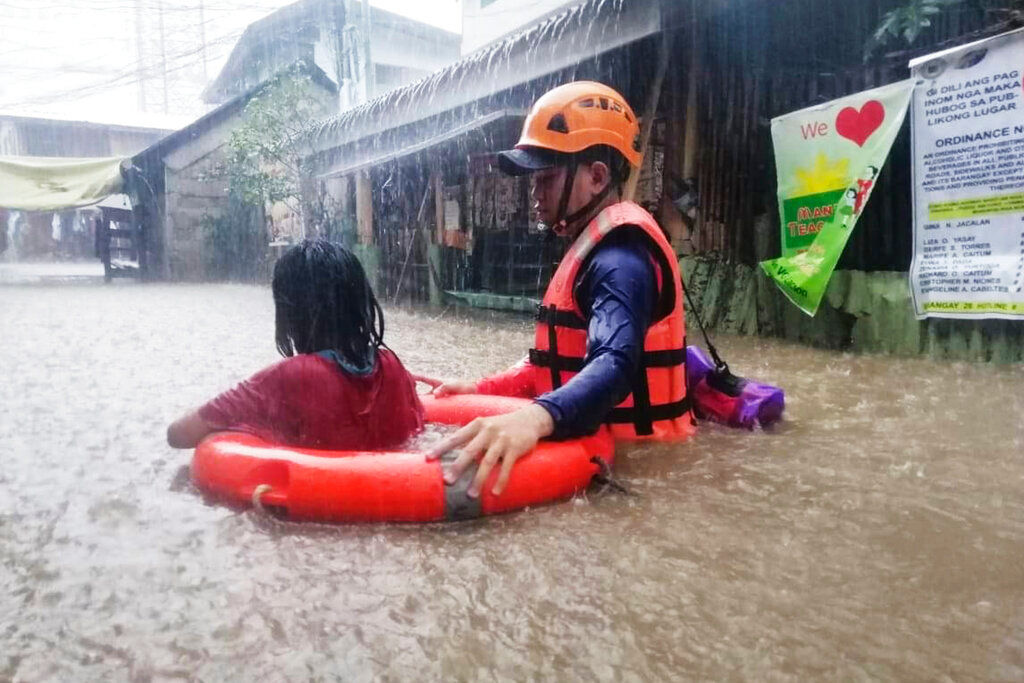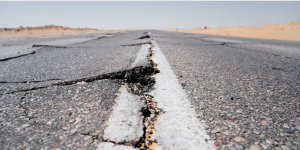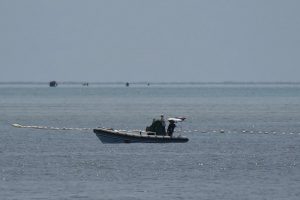Tens of thousands of people were being evacuated to emergency shelters in the southern and central Philippines on Thursday as a powerful typhoon approached.
Crowding in evacuation centers was complicating efforts to keep people safely distanced after authorities detected the country’s first infections caused by the omicron variant of the coronavirus.
Forecasters said they last tracked Typhoon Rai, with sustained winds of 185 kilometers (115 miles) per hour and gusts of up to 230 kph (143 mph), about 175 kilometers (109 miles) east of southern Surigao del Norte province. It was moving northwestward at 25 kph (15 mph). The typhoon, locally called Odette, was expected to hit the Dinagat Islands in the southeast later in the day, forecasters said.
Also Read | North Korea facing ‘harsh lean period’: UN food body
Several southern and central provinces were on typhoon alerts. Residents were warned to stay away from coastal and low-lying villages and other high-risk areas due to possible flash floods, landslides and tidal surges in or near the typhoon’s path.
Disaster response officials said about 10,000 villages lie in the projected path of the typhoon, which has a 400-kilometer-wide rain band and is one of the strongest to hit the country this year.
The Philippine coast guard said it has prohibited sea voyages in high-risk regions, stranding nearly 4,000 passengers and ferry and cargo ship workers in dozens of southern and central ports. Coast guard personnel and boats were on stand-by, it said. Dozens of mostly domestic flights have been cancelled.
Also Read | Thousands flee as yet another typhoon menaces Philippines
The Philippines is among the hardest hit countries in Southeast Asia by the pandemic, with confirmed infections of more than 2.8 million and more than 50,000 deaths. Quarantine restrictions have been eased and more businesses have been allowed to reopen in recent weeks after an intensified vaccination campaign helped reduce daily new infections to a few hundred from more than 26,000 in September. The detection of the omicron cases this week, however, has set off new alarms and the government renewed calls for people to avoid crowds and get vaccinated immediately.
Governor Ben Evardone of Eastern Samar province said he suspended vaccinations in his region of nearly half a million people due to the approaching typhoon. More than 70 percent of villagers in the province have gotten at least one shot against COVID-19 and Evardone expressed concern over vaccination delays because some vaccines stored in Eastern Samar will expire in a few months.
Overcrowding is unavoidable, he said, in the limited number of evacuation centers in his province, where more than 32,000 people have been moved to safety as the typhoon blew closer.
“It’s impossible to observe social distancing, it will really be tough,” Evardone told The Associated Press. “What we do is we cluster evacuees by families. We don’t mix different people in the same place as a precaution.”
About 20 storms and typhoons batter the Philippines each year. The archipelago is also located in the seismically active Pacific “Ring of Fire” region, making it one of the most disaster-prone countries in the world.







